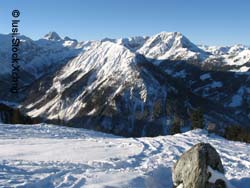Ain’t no mountain high enough
Add to My Folder
Explore one of Earth’s most fascinating landscape features and watch children’s learning potential peak

Mountains — one of Earth’s most fascinating landscape features
Mountains are rocky masses that have been elevated and shaped by powerful forces of nature. Exposed to unpredictable weather and cataclysmic events such as volcanic eruptions and avalanches, these vast expanses of upland can form forbidding barriers. Despite, or perhaps because of this, mountainous areas are of enduring appeal. Once regarded by various cultures as the home of gods, more recently these high wildernesses have presented a gruelling challenge to those seeking to explore them.
The making of a mountain
The Earth’s crust is composed of moving sections called tectonic plates. As these shift and slide, sedimentary rock around the edges buckles into massive folds and land is forced upwards to form mountain ranges. Magma from deep inside the Earth makes its way to the surface through faults and fractures in the crust to produce volcanoes and create igneous rock.
Rock masses over 2000 feet/ 600 metres are generally classed as mountains – lower heights are referred to as hills – and measurement usually relates to height above sea-level. Twenty four per cent of the Earth’s land mass is mountainous, with significant ranges occurring on every continent.
Already a member? Sign in below.
Published 22 October 2007
Reviews
You need to be signed in to place a review.


